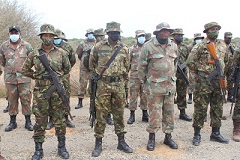
2012 promising for fishing industry
The fishing and fish processing sector is expected to improve after a decline of 2.0% during 2011. However, growth will remain negative at 1.8% according to the Bank of Namibia.
In its latest Economic Outlook Report, the Bank states that total landings improved in 2011 owing to good fisheries management.
“Going forward, it is expected that conditions will continue to improve in 2012, assisted by increased fishing quotas for 2012. However, fluctuating exchange rates and increasing oil prices remain major drag for the industry, also the European debt crisis continue to slow down the performance of the industry,” the Bank states.
Romè Mostert, an analyst at Simonis Storm Securities, concurs with this view. He says the prospects are promising for the local fishing industry with healthy resources across the spectrum.
“Catch rates and sizes are extremely good resulting in high catch efficiencies which will add pressure on the Ministry of Fisheries to increase TACs and quotas. Global food inflation underpins prices while a weaker global economy could lead to lower oil/fuel prices and ultimately lower costs for the industry. A weaker Namibian dollar will also be supportive for the fishing industry,” Mostert said.
He added that due to an increase in the total allowable catch (TAC), prospects for horse mackerel are positive.
“Due to conservative and good management of the horse mackerel resource, the resource is in a healthy state and growth prospects for the industry remains promising. Other global supply sources are under pressure as the Mauritania/Morocco and south Pacific resources are probably fully exploited which will support current prices. The end market for horse mackerel is also positive for the Namibian fishing industry. The target market is the low income African consumer which makes the horse mackerel industry relatively immune to further global economic weakness,” said Mostert.
Although the hake resource has strongly recovered, the total allowable catches for 2012 have been fairly unchanged at 140 000 tonnes with an additional 40 000 tonnes in resource.
A negative factor for the hake resource is the impact of the weak European economy on prices, however a weakening Namibian dollar is supportive and will limit the negative impact, continued Mostert.
“Total allowable catches for 2012 has not yet been announced, however, recent research has come across a pilchard resource twice the size of a year ago. Expectations are that pilchard total allowable catches will be unchanged at 25 000 tonnes with potential for an upside surprise. Up until recently, the Namibian pilchard industry has been facing stiff competition as a strong local currency led to cheap imports. However, looking forward a generally weaker exchange rate will offer support,” he concluded.
Fish processing on shore contributed 10.7% to the manufacturing sector last year.










































